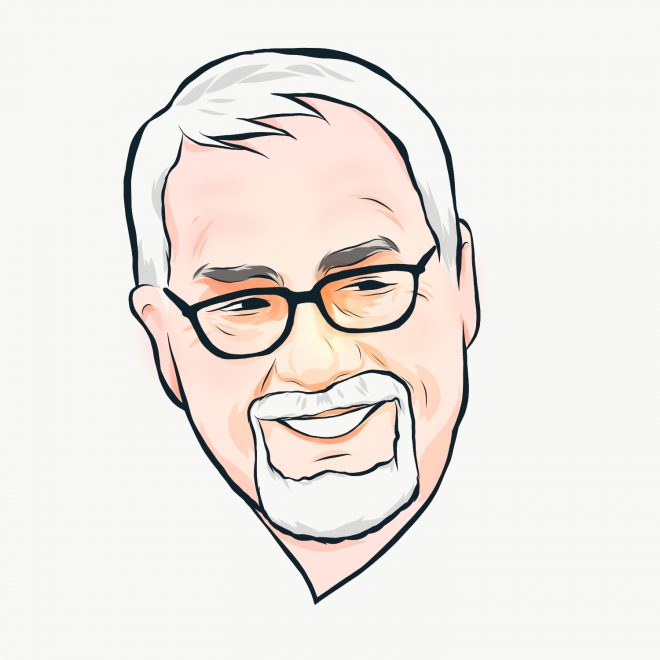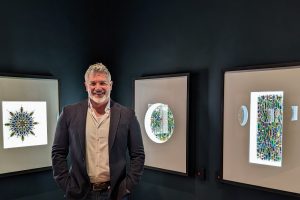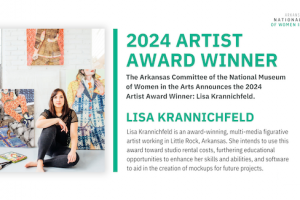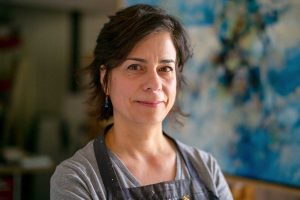THE LEGACY ISSUE: The Maker

Doug Stowe began his woodworking career in 1976 and a year later founded the Eureka Springs Guild of Artists and Craftspeople. He has launched many other ventures since then: In 1998, he was one of three founders of the Eureka Springs School of the Arts. In 2001, he started the Wisdom of the Hands Program at the Clear Spring School, a small independent school in Eureka Springs, to prove the value of wood shop and hands-on learning. In 2009, the Arkansas Arts Council named Doug an Arkansas Living Treasure for his work with wood and in education.
In 1995, Doug started writing books and articles about woodworking. He has since published 90 articles in various woodworking magazines and educational journals and written 13 books on woodworking techniques. He began his blog, Wisdom of the Hands, in 2006.
Doug continues to teach woodworking for grades 1–12 at the Clear Spring School, to work daily in his own shop, and to travel around teaching adult woodworking classes for schools and clubs. He lives in a hardwood forest at the edge of Eureka Springs with his wife, Jean.
How did you get into making furniture?
I moved to Eureka Springs to join the Eureka Springs Pottery Coop and when it folded I went to work for a small company making furniture out of old barn boards. That was called Arkansas Primitives. One crew would go out and salvage material from old barns while we made furniture from the lumber. When that company went out of business I did not have the money to start a pottery on my own, so I drove to my parents home in Omaha, Nebraska, picked up the 1948 shopsmith that my dad had given me on my 14th birthday and with a few more tools set up shop as a woodworker.
What attracted you to building things instead of painting or writing, etc.?
When I was in high school I restored a Model A Ford, taking it down to the bare frame, a full restoration that I drove to college. Both my grandfather and great grandfather were lawyers and aside from allowing me to restore the Ford, my parents wanted me to become a lawyer. When I was home in my senior year, thinking about dropping out of college, frustrated with the abstract quality of it all, my mentor who had helped me restore the Ford asked why I would be studying to be a lawyer when it was so obvious my “brains are in my hands.” What he said felt true. I went back to school with a shift in attitude, took classes in creative writing and pottery and managed to squeak through to graduation with a D in behavioral statistics.
What was the first item you built that you were truly proud of?
I’ve been making things since I was 14 years old and it’s not the things themselves but the value in the relationship with people they were made for. For instance, some wooden boxes that I gave my dad before he died in 1978 come to mind.
What are your favorite things to make?
I’m best known for making wooden boxes. I’ve made thousands. My largest single order was for 870 boxes that were given to the first year employees and volunteers at Crystal Bridges Museum. But are there favorite things? I love the process of making things from wood so I’m not as much into what the things are. I am into what they represent. I like making things that offer clarity and guidance to others. Much of what I make and the decision to make it has evolved from a desire to prove to myself it can be done and to show others how to do it. For instance, I recently invented a new honing device for sharpening planes. That was because I worked out the details in a nightly dream sequence and then had to prove to myself it could be made and that it would work as imagined. I shared my design with Veritas tools but since they’re not needing yet another honing jig to manufacture, I may do a how-to article about making and using it. Another project being finished in my shop is a Moxon Vise, A 17th century woodworking tool that others should know how to make and use. My moxon vise will be shown in an upcoming issue of Quercus magazine. At the same time, I have a variety of boxes being made in the shop for sale, and laminated wooden postcards that will be sold at auction to raise money for ESSA. My favorite project is almost always the one I’m working on now, largely because each one represents something or someone beyond itself.
How did you get into teaching?
My mother was a teacher, my great aunt Allene was a teacher. Two of my sisters were teachers and it is a terrible lie that some people have said, “that those who can’t do, teach.” Nothing could be more offensive or further from the truth. My daughter is a teacher. I got into teaching however, because as a maker of wooden things, and aspiring to learn to be a better maker of wooden things, I had to educate my customers and clientele as to the value of the techniques I was hoping to learn and use. Also, when I moved to Eureka Springs forests in the area were being clear-cut to form pastures and make room for gas stations. South of here the US forestry service was spraying defoliants similar to those used in Vietnam to kill hardwood forests to allow faster growing pines to take their place. As one who was newly introduced to the beauty of our native hardwoods, I took as part of my work the mission of educating folks as to the beauty and value of these woods. Teaching is something every craftsman must do in order to assert the value of what we do. Teaching can be direct or indirect but is nevertheless essential.
What are some important lessons you try to instill in your students, like philosophy, not necessarily how to create a specific piece of furniture or something?
When I started my wisdom of the hands program at the clear spring school, shop classes were being closed throughout the US. We were to be a “service economy” in an “information age,” and it was assumed wood working in school was intended only to prepare students for industrial employment, and it was assumed that “all kids must go to college,” college then being the only societally approved path to success. Shop class was no longer considered relevant to American education. I had learned a few things in my own shop that gave me a different perspective. First, I had been alerted that my brains were in my hands. And from that perspective I’d observed that woodworking was not irrelevant but was instead a perfect storm of integrated activity, all of which applied to what we hoped to teach kids in school. In the shop I was constantly using all my senses and knowledge of physics, chemistry, art, design, math, business management and narrative skills, both verbal and nonverbal. Instead of being pushed aside, I knew in my bones that shop activities for most students should be central to their educational experiences.
But what is the most important lesson? It’s not how to make something, it’s to begin to see the interconnections between things. Woodworking is not an isolated discipline, but instead, at its best draws you into a wholeness and holiness of life. All other craft disciplines are the same. They can be useful in building empowerment as well as helping to form a sense of being interconnected in the fabric of whole life. Deciding in schools that some kids would go to woodshop and others to college the loss of that sense of interconnectedness has been disastrous.
What role did you play in launching Eureka Springs School of the Arts?
In about 1978 I called the first meeting of artists from which the Eureka Springs Guild of Artists and craftspeople was formed. I was proclaimed president at that meeting because I was the only one there with a pencil and paper to record attendees. Much later and years down the road, Mary Springer and I began attempting to build the Guild into a school but found that it had the wrong tax status, one that would be nearly impossible to change. So we closed out that organization and with Eleanor Lux founded ESSA as a school without walls. ESSA is the direct descendent of the Eureka Springs Guild of Artists and Craftspeople. By that time I’d done several furniture projects for Robyn Horn, chairman of the Windgate Foundation. When I told her we were building a school, she suggested that when I was sure we had our ducks in a row I should ask for help. After a few years and when we’d proven our ducks to be in a row, they became instrumental at every point in our growth. I continue to serve on the ESSA board.
How does it feel to have seen ESSA grow and thrive?
It is amazing. All artists wonder how history will regard the things we have made. ESSA is our best work as it brings out the best in others also.
Do you think you will always teach?
I hope that when my direct teaching days are done, I can teach by example, still making things that are useful to others.
What do you love about teaching?
Otto Salomon, one of the founders of Educational Sloyd said that while the value of the carpenter’s work is in the object made, the value of the student’s work is in the student. What I see in my teaching is that students are directly empowered to both do and understand. What they are taught is then tested and proven in their own hands. In college I remember friends and I asking each other “what we would do when we got back to the real world” because we knew first hand, the artificiality of it all. When students do things that are real, making useful beauty to share with others there are no questions like that.
What are some of your biggest accomplishments if you haven’t mentioned them already?
I’ve written and published 13 books and am working on number 14. Two of them have been published in German translations. I’ve written over a hundred articles in woodworking magazines and educational journals. I like to think that I have had some impact on a renewed interest in shop classes. I’d like to think that people will someday get the idea that shop classes are not just for those not going to college, but will instead be meaningful to all students, as they are at the Clear Spring School, and not delayed as they are with some of our students at ESSA where many of our older students are discovering and asserting their own artistic creativity for the first time having spent years without having discovered such things.
Is there anything else you’d like to add?
I am an advocate of learning from the real world, a thing that’s become even more vital as so much of our lives have been shifted online. The engagement of the hands is symbolic of the whole person, like when the first mate calls, “All hands on deck!”





Comments